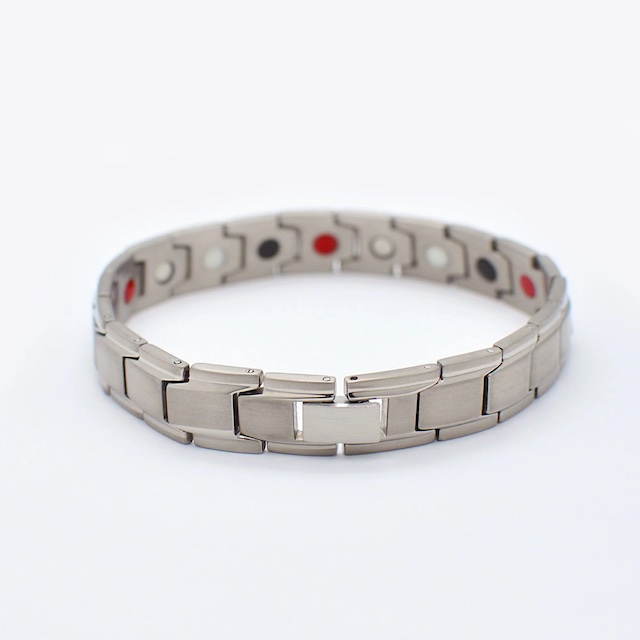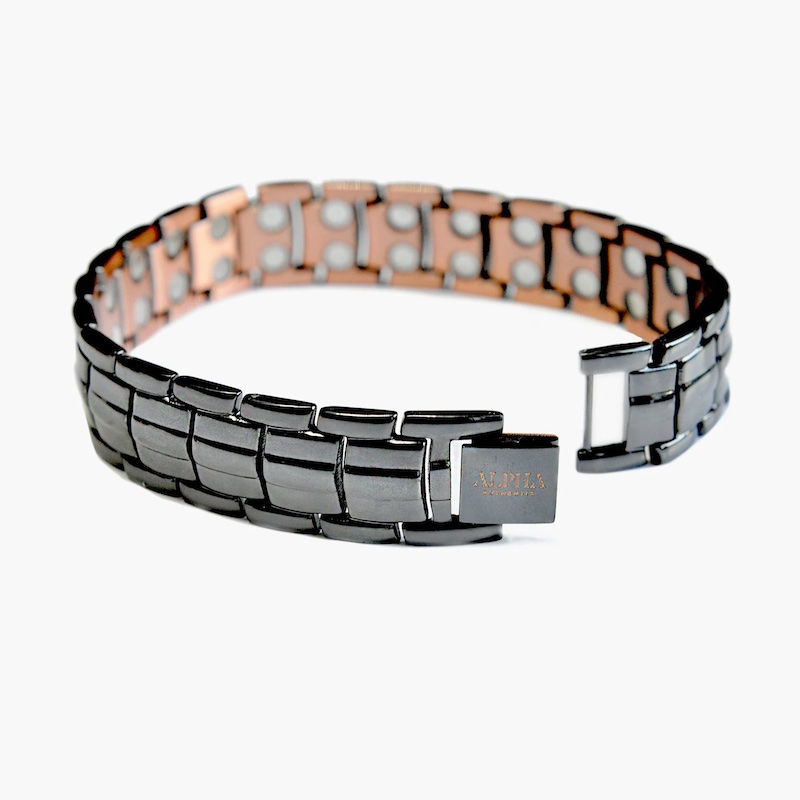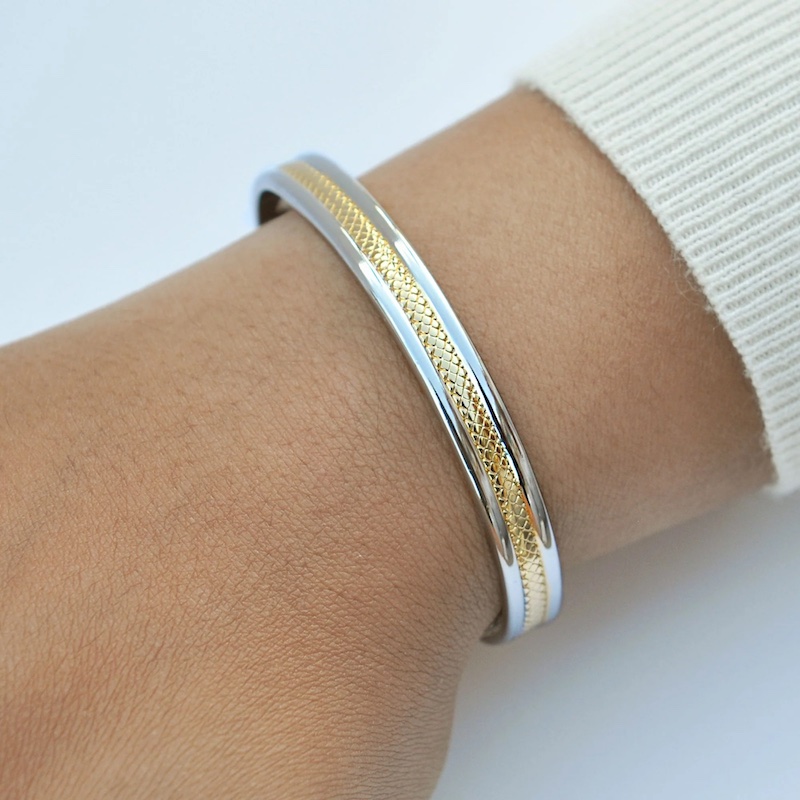Introduction to Magnetic Therapy Bracelets
Do magnetic bracelets work? Magnetic therapy bracelets are popular for pain relief. Made with magnets, these bracelets claim to ease discomfort. People with arthritis, muscle strains, and general pain wear them. But it’s unclear if they work as claimed. Let’s explore how these bracelets are thought to work.
History and Theoretical Basis of Magnetic Therapy
Magnetic therapy taps into the belief that magnets can improve health. This idea dates back to ancient times, including those of Cleopatra. Early users wore metallic materials hoping to fight disease and manage pain. Science now challenges these old beliefs.
During the Renaissance, magnets were thought to hold a ‘living energy’. They were used to combat infections and chronic pain. However, medical advances in the 1800s cast doubt on magnets. They lost their appeal as legitimate medical tools.
The 1970s saw a resurgence of interest thanks to Albert Roy Davis, Ph.D. Davis conducted studies on the effects of magnetic charges on biology. He claimed magnets could kill cancer cells, ease arthritis, and help with infertility.
Today, magnetic products are a billion-dollar industry. They are used for pain in various parts of the body, from the back to the knees. Even so, many recent studies find little proof of their effectiveness.
Magnetic bracelets represent this continued fascination with healing powers of magnets. They are sold worldwide, claiming to provide pain relief for various conditions. Despite these claims, scientific research does not fully support the therapeutic use of magnets for pain relief.
Static magnets, found in bracelets and other devices, are said to not work by the National Center for Complementary and Integrative Health (NCCIH). They advise against using magnetic therapy as a substitute for medical treatment.
Overall, the magnetic therapy field has a history rooted in both ancient beliefs and modern controversy. While some users report benefits, there’s still a lack of convincing scientific evidence.
Scientific Research on Magnetic Therapy for Pain Relief
In-depth research sheds light on whether magnetic bracelets are effective for pain relief. Multiple studies have explored the correlation between magnets and health benefits.
Insights from Clinical Studies
Clinical studies have had mixed results. Some report minor benefits, while others see no effect beyond a placebo. A systematic review in 2007, focusing on static magnets, found no significant pain relief from magnetic bracelets.
Analysis of Magnet Strength
Research evaluates the strength of magnets used in therapy. Bracelets often range from 300 to 5,000 gauss. However, no clear link connects magnet strength to pain relief benefits. MRI machines use much stronger magnets and have a different function.
Review by Health Institutes
Organizations like the National Center for Complementary and Integrative Health (NCCIH) conclude static magnets do not aid in pain management. They caution against using magnetic therapy as a standalone treatment.
In summary, current scientific research does not provide strong evidence for the use of magnetic bracelets in pain relief. Outcomes from studies generally suggest that any benefits are likely due to placebo effects. Individuals seeking pain management should consult healthcare professionals rather than rely on unproven methods.
Potential Benefits of Magnetic Bracelets
Although scientific evidence is lacking, users of magnetic bracelets often report various benefits. These perceived advantages include pain relief, especially for conditions like arthritis, improved circulation, and a general sense of well-being. However, such claims are largely anecdotal and not supported by robust clinical research.
Reported Pain Relief
Many wearers believe that magnetic bracelets reduce pain in areas such as the wrist, back, and knees. This is the primary motive for most users purchasing these bracelets.
Enhanced Circulation
Some individuals feel that magnetic bracelets improve blood flow, which could hypothetically lead to faster recovery from injuries and reduced inflammation.
General Well-being
A number of users report a sense of improved overall health and vitality when wearing magnetic bracelets, suggesting they may impact the body’s energy fields.
Placebo Effect
It’s important to note that even a placebo can have a powerful impact. If a person believes in the healing properties of a bracelet, they may feel relief merely due to this belief, regardless of the actual effect.
In conclusion, while people who use magnetic bracelets sometimes report benefits, these experiences are subjective and do not constitute scientific proof. Anyone considering magnetic therapy should keep this in mind and maintain realistic expectations about the potential effects.
Considerations When Choosing a Magnetic Bracelet
Choosing the right magnetic bracelet involves several factors. Quality, magnet strength, and comfort are key. Below are considerations to guide your purchase.
Assessing Magnet Strength and Quality
Opt for bracelets with high-strength magnets like neodymium. Ensure they are well-made and likely to last. Check reviews for product reliability.
Design and Comfort Matter
Choose a design that fits your style and is comfortable to wear. Adjustable bracelets work well for different wrist sizes.
Verify Material Safety
Pick bracelets made from skin-friendly materials to avoid allergies or irritation. Look for hypoallergenic labels on products.
Consulting Healthcare Professionals
Talk to a doctor before trying magnetic therapy. This is crucial, especially if you have health conditions.
Mindfulness of Medical Devices
Avoid magnetic bracelets if you use a pacemaker or other electronic medical devices. Strong magnets can interfere with their function.
Keeping Realistic Expectations
Understand that effects vary from person to person. Bracelets might not work for everyone. They are not a cure-all.
When picking a magnetic bracelet, personal needs and safety are top priorities. Individuals should ensure the bracelet is of good quality and suits their specific situation. Always consult healthcare experts before trying new pain management methods.
Precautions and Safety Concerns
When considering the use of magnetic bracelets for pain relief, safety is paramount. It’s essential to be aware of the potential risks and ensure that using such a device does not compromise your health.
Interference with Electronic Medical Devices
Strong magnets in bracelets can interfere with medical devices like pacemakers and insulin pumps. If you have an electronic device implanted, avoid magnetic bracelets.
Possibility of Skin Irritation
Some individuals may experience skin irritation or allergic reactions. Choose hypoallergenic materials to minimize risks.
Impact on Medical Conditions
Underlying health conditions could be affected by magnetic fields. Always consult a doctor before trying magnetic therapy.
Risks During Pregnancy
There is a lack of research on the effects of magnetic fields during pregnancy. As a precaution, pregnant women should not use magnetic therapy.
Effect on Medication Absorption
While not widely reported, there’s a possibility that magnets may alter the absorption of certain medications. Discuss this with a healthcare provider.
False Sense of Security
Relying solely on magnetic bracelets for pain management can lead to inadequate treatment. Always follow medical advice for any health concerns.
In summary, while many choose magnetic bracelets for potential pain relief, one must consider the various safety concerns. Consult with healthcare professionals and maintain a critical view towards such alternative therapies. Magnetic bracelets are not a substitute for medical treatment and should be used with caution.
Alternative Methods for Pain Management
Do magnetic bracelets work? In seeking relief from pain, exploring alternative methods can be beneficial for those wary of medication side effects or invasive procedures. Below, we discuss various non-pharmaceutical strategies that can serve as adjuncts or alternatives to pain management.
Physical Therapy
Physical therapy is a widely-recognized approach for managing pain, especially from musculoskeletal conditions. Working with a therapist can improve strength, flexibility, and range of motion while providing pain relief.
Acupuncture
Acupuncture, stemming from Traditional Chinese Medicine, involves inserting needles at specific points. Many find it effective for chronic pain, though individual experiences vary.
Mind-Body Techniques
Practices such as meditation, deep-breathing exercises, and yoga can help manage pain. They promote relaxation and may reduce the perception of pain.
Herbal Remedies and Supplements
Some favor natural supplements like turmeric or willow bark as alternatives to traditional painkillers. Before trying these, consult a healthcare provider.
Cold and Heat Therapy
Applying heat or cold packs can relieve pain and inflammation. Heat increases blood flow, while cold can reduce swelling and numb discomfort.
Transcutaneous Electrical Nerve Stimulation (TENS)
TENS uses low-voltage electrical currents to provide pain relief. It’s particularly useful for chronic pain patients.
Lifestyle Modifications
Simple changes, such as maintaining a healthy weight, practicing good posture, and engaging in regular exercise, contribute to pain reduction and overall well-being.
These methods offer diverse options for managing pain. They can be complementary to conventional treatments or used as alternatives, depending on the individual’s needs and the nature of their pain. Consulting with healthcare professionals is crucial to determine the best course of action for one’s unique situation.
Final Thoughts on the Effectiveness of Magnetic Bracelets
As we conclude this exploration into magnetic bracelets for pain relief, a few key points stand out. Though the allure of a simple and non-invasive pain relief option is strong, we must look at the available evidence with a critical eye. Here’s a summation of the key points discussed:
- Scientific Backing is Limited: Despite anecdotes, scientific research does not robustly support the effectiveness of magnetic bracelets for managing pain.
- User Reports Vary: While some individuals report positive experiences, these are subjective and can’t replace empirical evidence.
- Safety First: For those with medical devices or conditions, the potential risks of magnetic bracelets, like interference with pacemakers, must be considered. Consultation with a medical professional is crucial.
- Placebo Effect: We can’t ignore the placebo impact, where the belief in a treatment’s efficacy can result in perceived improvement.
- Complementary Options: It’s important to explore established alternative pain management methods such as physical therapy and lifestyle modifications.
- Medical Advice is Paramount: Always prioritize professional medical advice over alternative treatments, especially for chronic or severe pain conditions.
Do magnetic bracelets work? In essence, magnetic bracelets may not be the panacea some believe. While they are generally safe for most people, they’re not universally effective, and their claimed benefits remain scientifically unverified. Those interested might consider them as a complement to, not a replacement for, conventional medical treatments. Always stay informed and consult healthcare professionals to ensure the best care for your health.
Tags: do magnetic bracelets work, lifestyle modifications, old beliefs


